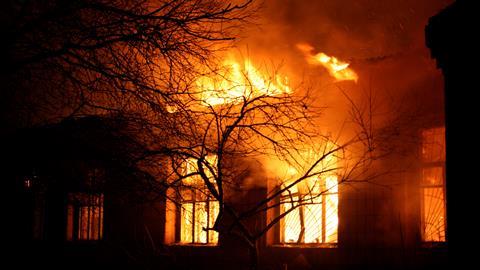A Court of Appeal case last year leveraged previous case law to decide that an insured’s intentions surrounding a property damaged by fire has no bearing on a claim payout based on reinstatement
An insured’s intention to rebuild their property that has been damaged by fire has no bearing on the indemnity amount they are entitled to receive on a reinstatement basis, said Joanna Grant, partner and head of the property risks team at Fenchurch Law.
Speaking at the law firm’s Virtual Coverage Symposium event on Tuesday 8 December, Grant explained the impact of 2019’s Sartex Quilts and Textiles v Endurance Corporate Capital case on how an insured’s intentions do not impact the principle of reinstatement – that the insured is entitled to recover their actual loss from an insured peril, regardless of whether they have begun rebuilding plans or works.
What makes this case particularly interesting are the special conditions set out within the policy wordings when explaining the reinstatement basis.
These specified that a payment could not be made until the “reinstatement commences and proceeds without unreasonable delay” or “until the cost of reinstatement has actually been incurred”.
Based on this, the insurer argued that the reinstatement basis could not be used to calculate indemnity because the insured showed no intention of rebuilding, therefore reinstatement would be uneconomic.
However, Sartex Quilts responded that it always intended to rebuild – the plans for the work were simply taking longer due to the business implications of the fire and resulting discussions around whether to move the property to another site.
Upon this, the insurer agreed to the reinstatement measure but set provisos:
- That the payout reflects the insured’s actual loss.
- That the insured intends to reinstate the property.
- That there is a genuine, fixed and settled intention to reinstate what was lost.
- That this was the intention at the time of loss and on a continuing basis thereafter.
The first instance judgment, however, ruled in favour of Sartex Quilts and the case progressed to the Court of Appeal.
The appeals court upheld the prior judgment, explaining that the need for an intention to reinstate is limited only to situations where the property has increased in value on account of the fire.
“The insurers appealed the first instance judgment saying that as per Great Lakes, there was a legal requirement to show a genuine, fixed and settled intention to reinstate and that test was not satisfied in circumstances where the insured had not at the time of the trial actually incurred the cost of reinstating the property at Crossfield Works and had not during the period following the fire demonstrated a genuine, fixed and settled intention to do so,” Grant explained.

“However, the Court of Appeal was clear that in general there was no doubt that what an insured does or does not intend to do with awarded damages is irrelevant to the question of what amount of damages the insured is entitled to receive in order to put it make in a material equivalent position, so far as money can do, to the position it would have been in if the insured peril had not occurred.
“The cost of reinstatement is the primary measure of indemnity even if the insured has no intention of using the insurer’s money to reinstate.”
Intentions impacting value
There are some specific examples where an insured’s intentions over the property that suffered fire damage will need to be taken into account, for example if this will affect the value of the property.
Grant listed four scenarios where this may be pertinent.
Firstly, whether the insured planned to sell the property; if the insured was willing to accept an offer of the market value, then it would follow that the claim payout should be the same amount.
Secondly, whether the property was due to be demolished – in effect, a fire then served to expedite the demolition process and no loss was truly suffered.
The third consideration is around the insured’s intention to use the property in its pre-loss condition, so if they planned to rebuild the property as it was in order to use it for the same purpose, or whether the rebuild could be completed using cheaper, modern materials at all.
Lastly, there are examples where a fire event can increase the value of a property, which would not adhere to the reinstatement principle. For example, if a fire caused a property to lose its listed status, it could then be worth more as the site could be developed.
“In Sartex, the insurers sought to argue that those principles were not limited to cases where the value of the property had, for example, increased as a result of the insured event, but were more generally applicable. The court disagreed,” Grant added.
Hosted by comedian and actor Tom Allen, 34 Gold, 23 Silver and 22 Bronze awards were handed out across an amazing 34 categories recognising brilliance and innovation right across the breadth of UK general insurance.






















































No comments yet